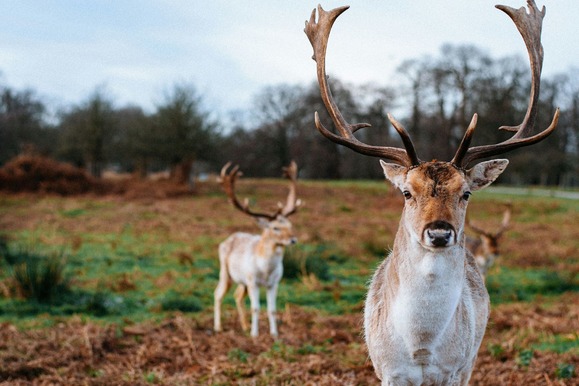|
 |
Climate newsletter |
|
|
Issue 79 | 13 November 2024 |
|
On Monday 11 November, the 29th session of the Conference of the Parties to the United Nations Framework Convention on Climate Change (UNFCCC) – COP29 – got underway in Baku, Azerbaijan. This UN climate summit has brought together global leaders to undertake negotiations on the action needed to tackle our changing climate.
Ahead of the summit and over the last few days, a series of announcements have been made on the latest evidence on climate change.
|
|
 On 11 November, the World Meteorological Organization (WMO) published a State of the Climate 2024 Update. A number of global datasets, including the Met Office’s HadCRUT5 dataset, contribute to the temperature section of the report. The consensus of these datasets shows the January – September 2024 period was 1.54°C (±0.13°C) above pre-industrial levels (1850-1900). The report also states that 2024 is set to be the hottest year on record, in line with the Met Office forecast made in December last year. They note that long-term warming measured over decades remains below 1.5°C.
On the same day, the Met Office published a blog post reflecting on this latest evidence as well as an update to the current global warming level also included in the report update. The latest calculations put current global warming at 1.3°C above the pre-industrial period (1850-1900).
On 7 November, the Copernicus Climate Change Service also published their latest bulletin in which they report that 2024 is on track to be the warmest year on record and the first above 1.5°C.
|
|
|
Earlier today, Global Carbon Budget published their report on global carbon emissions for 2024 indicating that they have reached a record high. “The impacts of climate change are becoming increasingly dramatic, yet we still see no sign that burning of fossil fuels has peaked,” said Professor Pierre Friedlingstein, of Exeter’s Global Systems Institute, who led the study.
On 28 October, the World Meteorological Organization (WMO) released their latest report on greenhouse gas levels which indicated that carbon dioxide (CO2) is accumulating in the atmosphere faster than any time experienced during human existence, rising by more than 10% in just two decades.
|
|
|
Today, we published a news release about the research carried out through a collaboration between the Met Office and The Wildlife Trusts. Nigel Doar is the Head of Science and Research at The Wildlife Trusts. He said: “These projects have been great opportunities to bring together the skills of people at the Met Office who understand climate change and those colleagues across The Wildlife Trusts who have a growing list of questions about how a changing climate will affect the UK’s native plants and animals, and the habitats and landscapes where they live.”
|
|
|
On 7 November, the WMO published a new multi-agency report on the need for climate services. The report found progress supporting climate action, but big gaps and that adaptation funding must be better informed by climate services.
|
|
 On 30 October, the Met Office published a blog post with The Wildlife Trusts exploring how climate change is impacting nature.
Nigel Doar, The Wildlife Trusts’ Head of Science and Research, said: “We need to do the things we know we can do on a bigger scale, like making our landscapes more natural, making them more flood resilient, and our towns and cities greener.
“Climate change isn’t going to make any of our lives better, easier or cheaper. But we can invest now to give us all the biggest chance of a pleasant future. If we look after the wildlife and the natural world, it will help look after us.”
|
|
|
On 29 October, the Met Office published a blog post while the international biodiversity conference at COP16 in Cali, Colombia was taking place. The post reflects on dual challenges of climate change and biodiversity loss, with a close look at the Amazon basin.
|
|
|
On 24 October, the United Nations Environment Programme (UNEP) published their latest report on future trends in greenhouse gas emissions. According to the report, “as things stand, current NDCs put the world on track for a global temperature rise of 2.6-2.8°C this century. Even worse, policies currently in place are insufficient to meet even these NDCs. If nothing changes, we are heading for a temperature rise of 3.1°C.”
|
|
|
Follow us on social media channels to join the conversation. Look our for our hashtag - #GetClimateReady - on X (formerly Twitter), and follow our climate channels on TikTok and Instagram.
You might also be interested in our new Government and Industry Newsletters. Subscribe here.
|
|
|
To subscribe or unsubscribe please visit our email updates page to access your preferences.
The Met Office is not responsible for the content of external internet sites.
|
|
|
|